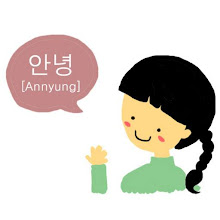
한국의 사극이나 전통 공연을 본 적 있다면, 한국 전통 의상인 한복이 당신의 시선에 들어오는 경험을 했을 것이다. 하지만 최근에는 세계적으로 각국의 전통 의상은 특별한 날에만 입는 추세이다. 그리고 이는 한국에서도 마찬가지다. 일상생활 속에서 한복을 입고 다니는 사람들을 보기란 결코 쉽지 않다. 그렇기 때문에 한복에 대한 궁금증이 많은 분들이 있을 것 같아 한복에 대해 살펴보고자 한다. 그럼 지금부터 한복, 그리고 한복의 특징들에 대해서 알아보자.
If you've seen Korean historical, period-piece soap operas or traditional performances, you may have experienced traditional Hanbok clothes capturing your eyes and attention. As I'm sure you've noticed, in many countries around the globe, people seem to only wear their traditional clothes on special occasions. This is also the same in Korea. It's not easy to see people wearing Hanbok as they go through their modern, daily routine. For this reason, I would like to talk about Hanbok for those who wish to know more about it. Let’s learn more about Hanbok and its main characteristics.
한복은 오래 전부터 대대로 이어져 온 한민족 고유의 의복이다. 북한에서는 한복을 ‘조선 옷’이라고 한다. 한복은 긴 역사를 지니며 여러 특징들을 갖고 있다. 그 중 가장 뚜렷한 특징은 바로 ‘선’이다. 여성 한복의 경우, 저고리 소매 윗부분은 직선, 아랫부분은 곡선으로 이루어져 있다. 한편 치마는 선이 반달모양으로 부드럽게 내려와 매우 아름답다. 따라서 한복은 직선과 약간의 곡선이 만나 한복만의 아름다움을 만들어낸다. 그리고 이러한 선의 조화와 아름다움은, 특히 여성 한복에서 크게 두드러진다.
Hanbok is a traditional type of clothing from the Korean Peninsula that has evolved over many generations, over quite a long time. In North Korea, people call it Joseonot (조선옷) or "Joseon clothes." Hanbok has a long history and has many characteristics. One of the most noticeable characteristics lies in the line or silhouette. In the case of women’s clothing, the upper line of the jeogori, a bolero-like jacket, has a straight line, whereas the bottom line has a curved line. The skirt, or chima (치마), also has a beautiful half-moon-shaped line that creates the beauty of Hanbok. Its harmonized lines and beauty can be clearly seen in many types of Hanbok women’s clothing.
한복의 또 다른 특징은 용도에 따라 종류가 다양하다는 점이다. 평소 일상생활에서 입는 평상복이 있으며, 또한 특별히 예절을 차릴 때 입는 예복이 존재한다. 예를 들어 모든 사람들에게 중요한 날인 결혼식 때 입는 전통 혼례복도 예복의 한 종류이다. 게다가 한민족은 계절에 따라 옷감이 다른 한복을 입었다. 여름, 겨울에 따라 원단과 옷감 그리고 물감들을 신중하게 선택하여 실용성은 물론, 한복의 품위까지 살렸다. 한편 과거 한국의 평민계층들은 주로 다채로운 색감의 한복이 아닌 하얀, 즉 백색 한복을 평상복으로 입었다. 이 때문에 한민족은 옛날에 ‘백의민족’이라고 불렀다고 한다.
Another unique feature of Hanbok can be seen in the variety of Hanbok, depending on use. You can see some clothes that were worn for everyday work. Then there are more formal dresses that were only worn on special occasions, such as wedding gowns. People also wore Hanbok made from different textiles, depending on the season. They carefully selected the fabric, cloth, and dye in order to enhance the practicality and the dignity of Hanbok. Meanwhile, lower classes in the past used to wear white Hanbok as their day-to-day clothing item, nothing with any vivid colors. This is why Joseon people were also dubbed as being the baegui minjok (백의민족, 白衣朝鮮) in the past, or the "people in white."

나는 한복이 사람을 생각해서 만들어진 의상이라는 생각이 든다. 왜냐하면 기본적으로 상체가 길고 하체가 짧은 한국인의 체형 균형을 잡아주기 위해서 만들어졌기 때문이다. 이어 활동성을 중시하며 달라붙는 옷이 아니기에 마르거나 몸무게가 나가도 아무 고민 없이 입을 수 있는 옷이다. 또한 어깨선에 새겨진 무늬는 여성의 어깨를 좁고 날씬하게 보이게 하는 효과를 가지고 있다.
Hanbok is popular because it's basically made to adhere to the Korean body shape, with a longer upper half of the body and a shorter lower half. As it's not too tight, it allows for active body movements. Anyone, whether thin or fat, can wear it without any inconvenience. The patterns that decorate the shoulder lines also make women's shoulders look narrower and slimmer.
뿐만 아니라 한복은 입는 이의 건강을 지켜준다고 생각된다. 한복은 넉넉하게 만들어져 몸을 과도하게 조이지 않음으로 몸에 무리를 가하지 않기 때문이다. 게다가 한복은, “가슴 위는 차게, 배꼽 아래는 따뜻하게 하여야 건강하다”는 한의학의 이론에도 적합한 의상이다. 목 부분을 시원하게 터놓은 반면, 허리와 바짓가랑이의 끝은 접은 뒤 끈을 묶어줌으로써 겨울의 찬바람을 막아준다. 이처럼 한복은 입는 이에 대한 배려가 가득 담긴 의상이다.
I think Hanbok protects the people who wear it because it's made to fit loosely, not overly tight, and doesn't cause any harm to the human body or to one's health. What’s more, Hanbok is in line with certain concepts of traditional Oriental medicine that advise people to keep the upper part of the chest cooler and the lower part of the belly warmer in order to stay healthy. Hanbok leaves the neck open to keep it cool, whereas the back and the end of the pants are made to be folded and tied to protect the body from cold, especially in the winter. As such, we can see that Hanbok is made to take care of the people who wear it.
노출을 최소화하고 단정함과 소박함을 지닌 한복 속에는 한국의 고전미가 녹아 들어 있다. 따라서 우리는 한복을 통해 한국인의 문화, 옛 생활 패턴 그리고 그들의 윤리 등에 대해서 알 수가 있다. 한복, 그 속에는 단순한 전통의상 이상의 의미가 숨겨져 있다.
Hanbok is neat and tidy, with a minimum of exposure. Traditional beauty is embedded in it. Through Hanbok, we can learn more about ancient Joseon, our lifestyle in the past, and the ethics of people from the past. It's not just the traditional attire that it seems to be.
우즈베키스탄에서 유학 온 율다세와 샤흘로씨는 경희대학교 무역학과를 졸업했다. 앞으로 한국에서 일할 계획이다.
Yuldashevwa Shakhlo is from Uzbekistan and graduated from the Department of Trade at Kyung Hee University. She plans to live and work in Korea.
Translated by Korea.net Staff Writer Yoon Sojung



.jpg)





0 comments: